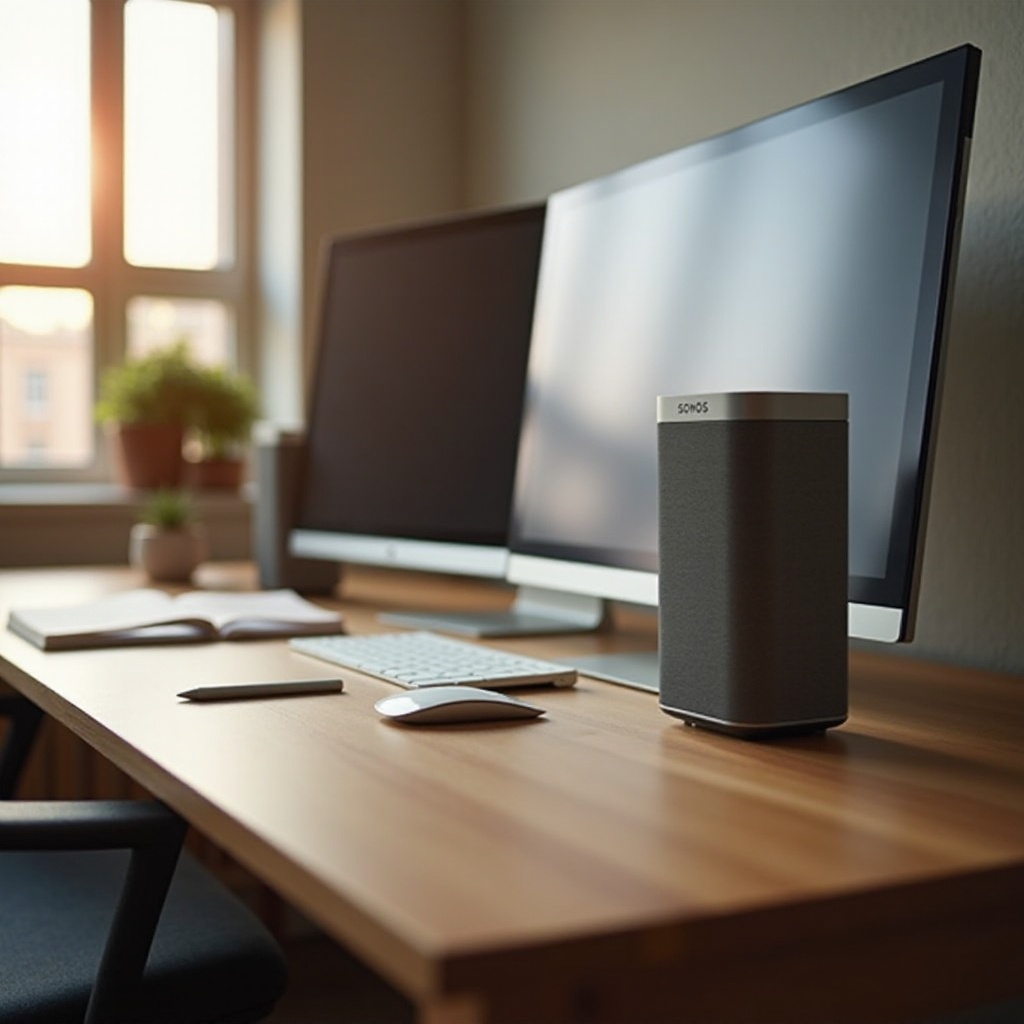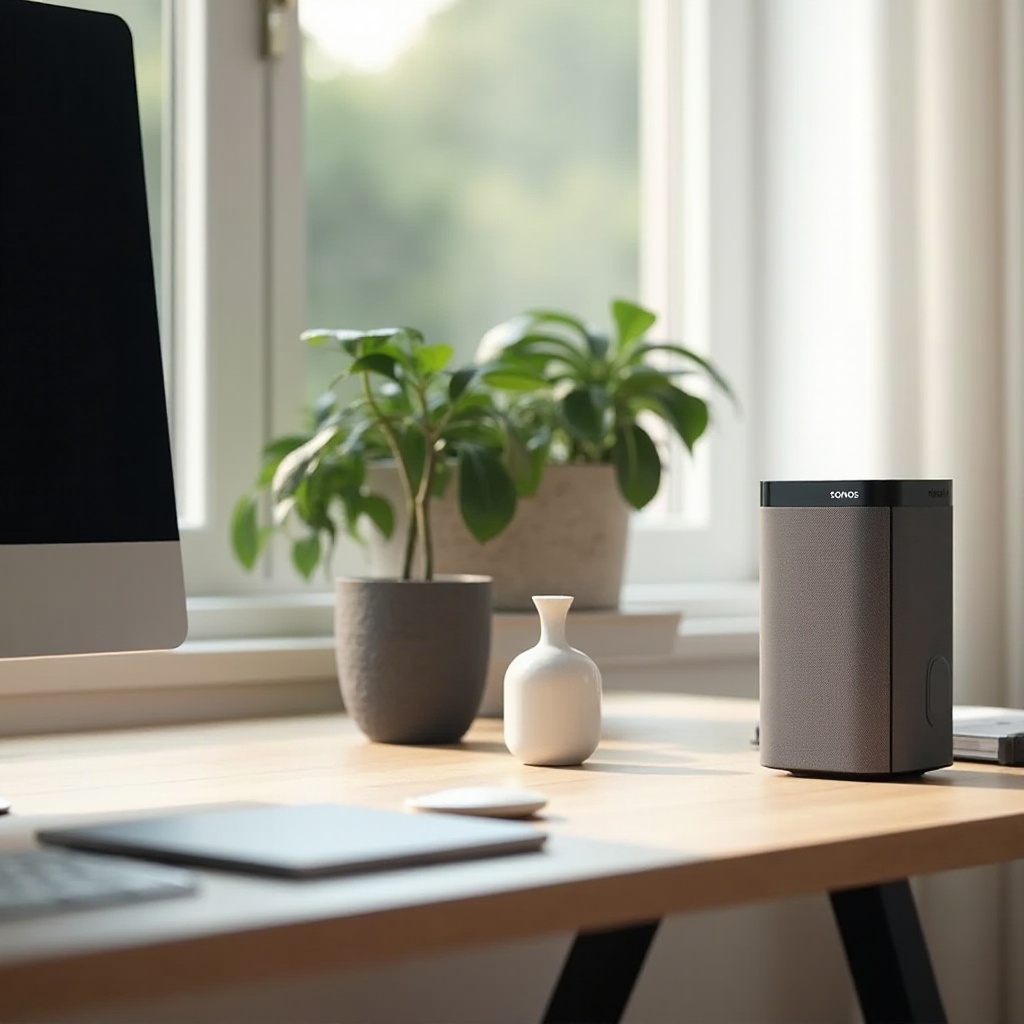Transforming Your Desk Setup: Using Sonos as Desktop Speakers
Introduction
Revamping your desk setup can significantly enhance your productivity and overall work experience. High-quality audio can play a crucial role in this transformation, especially for those who enjoy music, podcasts, or need clear audio for calls. Sonos speakers, renowned for their exceptional sound quality and smart features, offer an ideal solution for your desktop setup. This blog will explore the benefits of using Sonos as desktop speakers, guide you through selecting the right model, provide a step-by-step setup process, and offer insights into enhancing your workspace. Let’s delve into how Sonos speakers can transform your daily work environment.

Benefits of Using Sonos as Desktop Speakers
Investing in Sonos speakers for your desktop setup comes with numerous advantages. Firstly, the sound quality is unparalleled. Sonos delivers rich, crisp, and immersive audio, making your music or calls sound much more enjoyable. Unlike conventional desktop speakers, Sonos ensures that every note and word is clear.
Moreover, Sonos speakers are incredibly versatile. Whether you opt for a compact model like the Sonos One or a more powerful option like the Sonos Beam, there’s a perfect fit for every workspace. Their sleek design also blends seamlessly with any décor, adding to the aesthetic appeal of your desk setup.
Additionally, Sonos speakers come equipped with smart features like voice control and integration with various devices. This allows for hands-free operation and easy management of your audio experience. The Sonos app further enhances usability, offering features like sound adjustments and creating a multi-room audio experience.

Choosing the Right Sonos Model for Your Desktop
Selecting the right Sonos model is crucial to achieving the best desktop setup. Here are three popular options:
Sonos One
The Sonos One is compact yet powerful, making it ideal for smaller desks or spaces. It offers excellent sound quality, comes with built-in voice control through Alexa or Google Assistant, and seamlessly integrates with other Sonos products. Its small size doesn’t compromise on audio performance, providing a full and rich sound that enhances any workspace.
Sonos Beam
For those who desire a more robust audio experience, the Sonos Beam is an excellent choice. Though initially designed as a soundbar for TV setups, its versatility allows it to double as a superb desktop speaker. It offers a balanced sound profile that enhances both music and spoken word content. With built-in voice control, it’s also easy to manage without the need for an external device.
Sonos Move
If portability is a key concern, then the Sonos Move is the way to go. This speaker provides all the benefits of Sonos audio technology but with the added advantage of being portable. Its battery life ensures you can move it around without worrying about constant recharging, making it perfect for those who work in various locations or occasionally step away from their desk. It’s also weather-resistant, adding a layer of durability and making it perfect for versatile use.
Step-by-Step Guide to Setting Up Sonos Speakers
Now that you’ve selected the right Sonos model, it’s time to set it up. Here’s a comprehensive guide:
Required Equipment
Before starting the setup, ensure you have the following:
– Your chosen Sonos speaker model
– A stable Wi-Fi connection
– The Sonos app installed on your smartphone or computer
– Power cables and a nearby power outlet
Installation Process
- Connect Your Speaker: Plug in your Sonos speaker and power it on.
- Open the Sonos App: Launch the Sonos app on your device and follow the on-screen instructions to connect the speaker to your Wi-Fi network.
- Add Your Speaker: Navigate to ‘Settings’ in the app, select ‘System,’ and then ‘Add Product.’ The app will guide you through the process of naming your speaker and assigning it a room.
- Customize Settings: Once connected, you can adjust settings such as sound levels and EQ through the Sonos app to suit your preferences.
- Set Up Voice Control: If your Sonos speaker includes voice assistance, follow the prompts in the app to connect to your desired voice assistant service.
Common Issues and Troubleshooting
- Wi-Fi Connectivity: Ensure your speaker is within range of your Wi-Fi router. If connectivity issues persist, try restarting your router and speaker.
- App Issues: Make sure your Sonos app is updated to the latest version. Reinstalling the app can also resolve common issues.
- Audio Dropouts: Check for interference from other wireless devices and ensure your speaker’s firmware is up-to-date via the Sonos app.
Enhancing Your Workspace with Sonos Features
Sonos speakers are not just about sound; they come loaded with features that can enhance your entire workspace experience.
Voice Control and Smart Features
With built-in voice assistants like Alexa and Google Assistant, managing your audio experience is effortless. You can play music, ask questions, or manage your calendar, all hands-free, allowing you to focus on your work.
Using the Sonos App for Optimal Sound
The Sonos app offers various features to customize your audio experience. You can adjust the EQ settings, set sleep timers, and even sync multiple Sonos speakers to create a surround sound environment. The app also integrates with a wide range of music streaming services, giving you endless audio options.
Integration with Other Devices
Sonos speakers can easily integrate with other smart home devices. Whether it’s your home security system or lighting, your Sonos speaker can be a part of a larger smart home ecosystem. This integration enhances convenience and control, making your workspace highly efficient.

User Experiences and Reviews
Users across the globe highly rate Sonos speakers for their audio quality and smart features. Many appreciate the seamless integration with other devices, which simplifies their work environment. Additionally, the Sonos app receives praise for its intuitive interface and customization options, making it user-friendly for tech enthusiasts and novices alike.
Alternatives to Sonos for Desktop Speakers
While Sonos is a leading choice for desktop speakers, there are alternatives worth considering:
- Bose SoundLink Revolve: Known for its 360-degree sound and portability, it’s a great option for high-quality audio.
- JBL Charge 4: Offers powerful sound and a built-in power bank, making it ideal for those who need both superior audio and charging capabilities in one device.
- Amazon Echo Studio: Features spatial audio processing technology for an immersive sound experience and integrates well with other smart home devices.
Conclusion
Transforming your desk setup with Sonos speakers can significantly elevate your workspace ambiance and productivity levels. Their superior sound quality, ease of use, and smart features make them ideal for any desktop environment. Integrate Sonos into your setup today and experience the difference.
Frequently Asked Questions
Can Sonos speakers work with a wired connection to my desktop?
While Sonos speakers are primarily designed for wireless use, you can connect via a Sonos Port or through Bluetooth options with specific models like the Sonos Move.
What is the best Sonos model for a small desk setup?
The Sonos One is ideal for small desk setups due to its compact size and powerful sound output.
How does the sound quality of Sonos speakers compare to other desktop speakers?
Sonos speakers are renowned for their rich, clear, and immersive sound quality, often outperforming standard desktop speakers in terms of audio fidelity and smart features.
